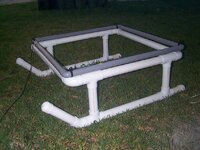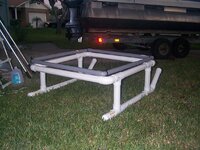Oceanscience
Full Member
- May 23, 2010
- 207
- 202
When we talk about shipwrecks in the Bahamas, we think about the past 500 years. How did the Bahamas look like 500 years ago?
What are the changes in altitude of the islands? Or should we say that the water level has risen by how much?
For example, the region where the "Maravillas" sank, was known as "Los Mimbres" which can be translated as "The Reeds". This suggests that there was some swampy area, where reeds were growing. There is no such thing nowadays. What happened? Did the land subside? Did the sea level rise?
How much?
How would this change the edge of the banks? It could very much change the tidal currents across the banks. The tidal currents have a strong influence on the shape of the sandy bottom.
Tidal currents can score out deep holes and in other places heap up sand dunes where a shipwreck, or parts thereof can get snagged. Changing shapes of the sea bottom due to changing currents, can later remove the sand and leave the wreckage on the hard pan bottom. More changing conditions can re-bury the shipwreck remains under many feet of sand.
The fact is, that the sand is easily moved by Hurricanes, Northers and in-numerous minute variations in weather patterns and sea level changes.
What are the changes in altitude of the islands? Or should we say that the water level has risen by how much?
For example, the region where the "Maravillas" sank, was known as "Los Mimbres" which can be translated as "The Reeds". This suggests that there was some swampy area, where reeds were growing. There is no such thing nowadays. What happened? Did the land subside? Did the sea level rise?
How much?
How would this change the edge of the banks? It could very much change the tidal currents across the banks. The tidal currents have a strong influence on the shape of the sandy bottom.
Tidal currents can score out deep holes and in other places heap up sand dunes where a shipwreck, or parts thereof can get snagged. Changing shapes of the sea bottom due to changing currents, can later remove the sand and leave the wreckage on the hard pan bottom. More changing conditions can re-bury the shipwreck remains under many feet of sand.
The fact is, that the sand is easily moved by Hurricanes, Northers and in-numerous minute variations in weather patterns and sea level changes.










